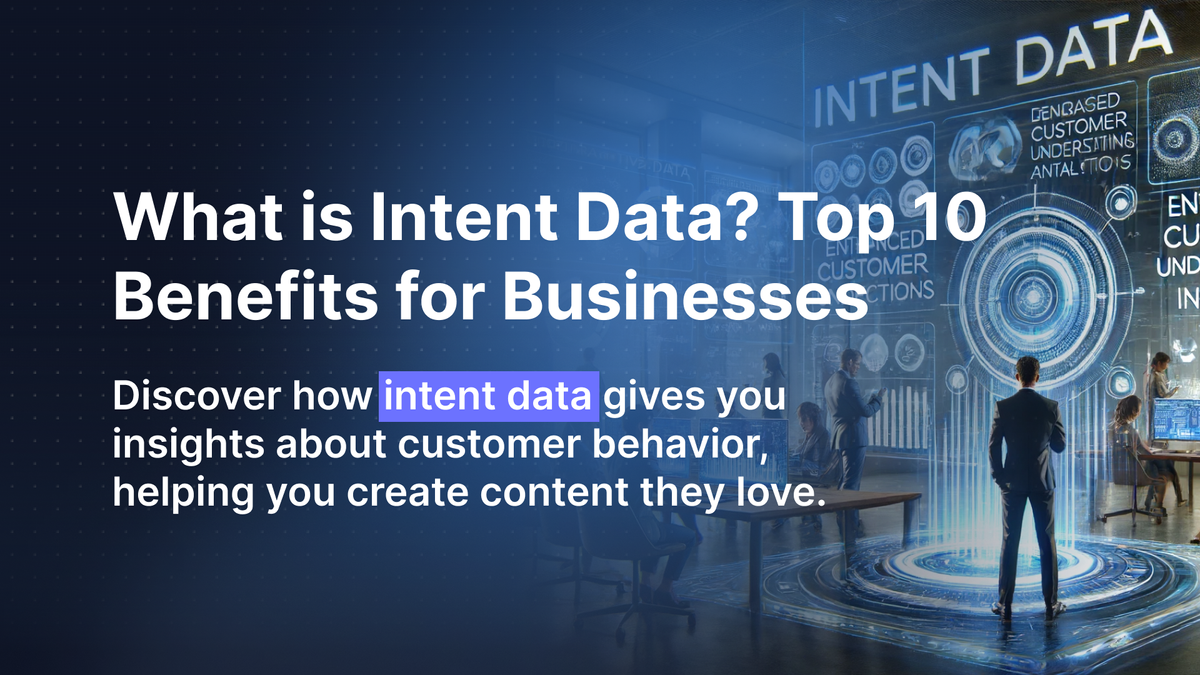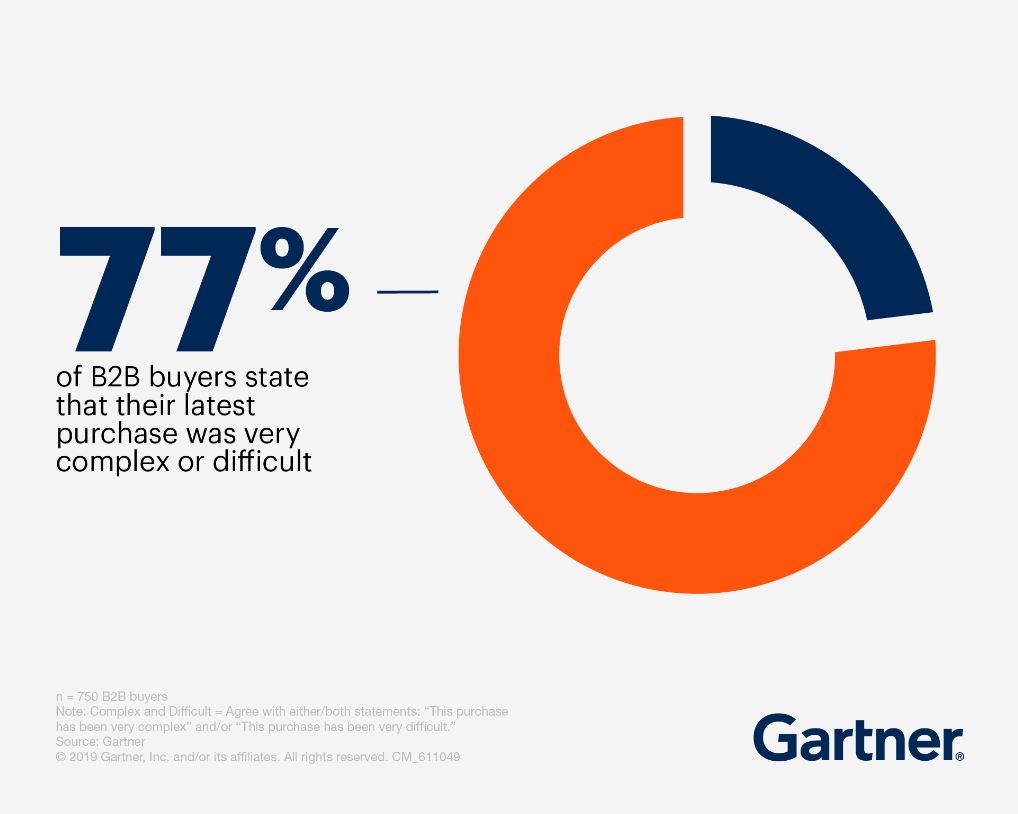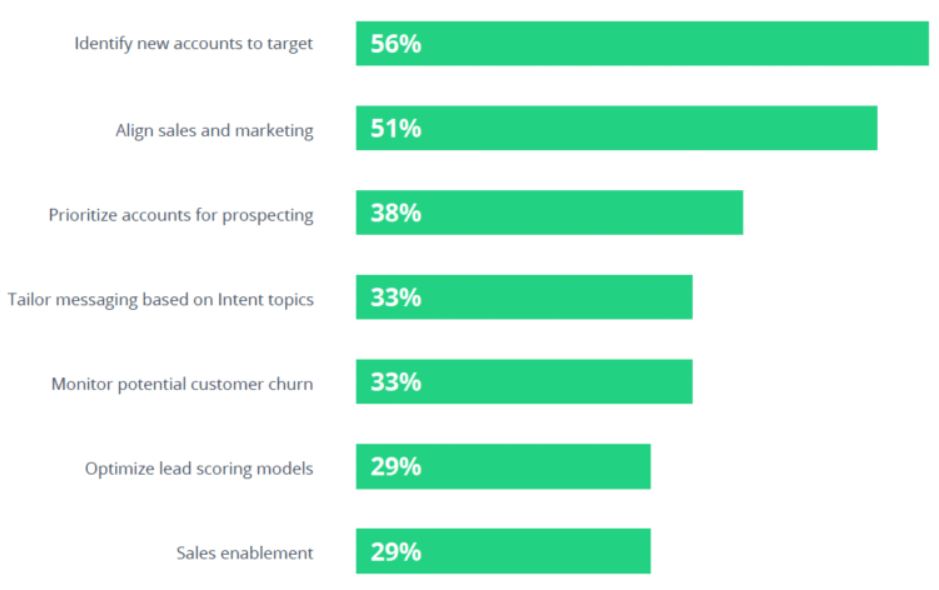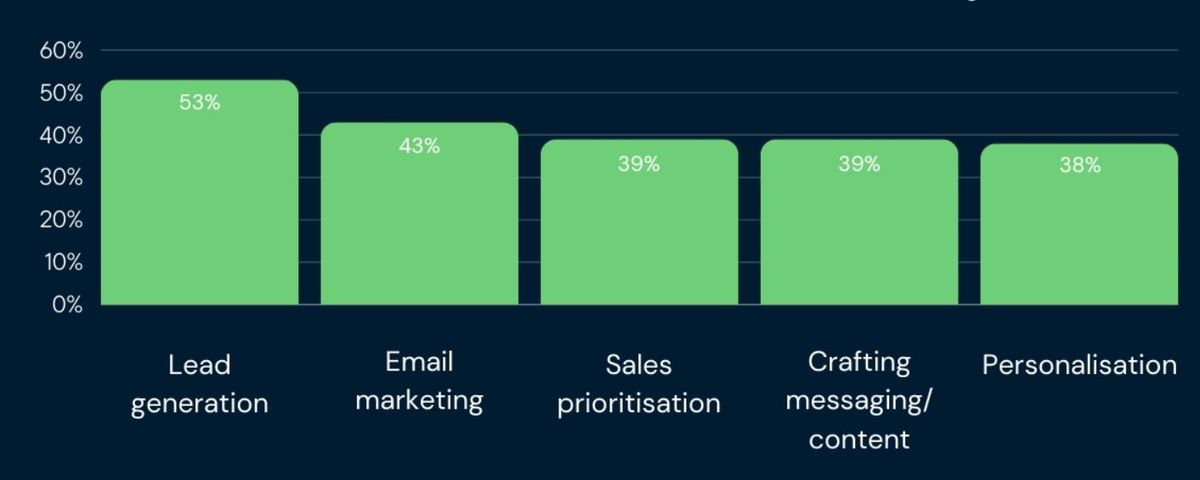Discover how intent data gives you insights about customer behavior, helping ...

Understanding your customers is critical for success, especially in today's digital age, where competition is fierce and customer expectations are high. But demographics just scratch the surface. Customer intent data is your secret tool, revealing what customers truly want and why. Forrester reports that 85% of companies that use intent data have achieved business benefits. The future belongs to businesses that can tap into the hearts and minds of their customers, and that's exactly what intent data helps you achieve.
This article explores the various benefits of intent data and how it can be collected. It also highlights the growing role of AI-powered customer service chatbots in conveniently gathering this valuable customer intelligence.
Intent data is the information that helps businesses understand what their prospects or customers are interested in online. This data comes from different online activities such as content search, website visits and social media interactions conducted from time to time. This information is collected and analyzed by different teams such as sales, marketing or customer service to get a better understanding of customer behavior.
Customer intent data helps businesses to approach their target audience more effectively, personalize interactions throughout the customer journey, and ultimately provide a better customer experience.
Imagine a company that sells marketing automation software. Intent data might show that a specific lead has been reading blog posts about marketing automation and downloaded an ebook on “Choosing the Right Marketing Tool”. This shows a strong purchase intent, so the sales team can reach out with helpful information and support, with higher chances of a successful conversion.
Intent data can be broadly categorized into two main types: by source and by signal. Both offer valuable insights into customer preferences and buying behavior, which we'll explore in more detail.
This refers to where the data originates from. Here are two main categories:
First-party data is the information a company collects directly from its own sources. This includes things like what pages they visit, what they search for, and what content they download. Cookies and IP addresses help you track this activity, revealing customer interests and behavior across your digital properties.
Unlike first-party data, third-party intent data comes from external sources or platforms that track online behavior across the internet. It provides insights about customers interests other than your website such as browsing habits, social media activity or competitor visits, providing a more comprehensive view of their online journey.
Intent data signal refers to the specific type of behavior the data captures, indicating purchase intent. Here are some common categories:
Search data, a form of implicit intent data provides insights into customer interests based on their online searches. For example, someone searching for "best running shoes for beginners" is likely showing purchase intent for running shoes. This knowledge helps you to provide them with the most relevant and appropriate content they're seeking.
Engagement data tracks how people are interacting with a particular piece of content, such as a blog, social media post, or a video. For example, engagement data for a blog post might show the number of clicks, comments, and shares. This information helps you understand what resonates with your audience and tailor future content accordingly.
Search history and how people interact with content (likes, comments) reveal B2C intent data**.** This data helps you understand individual preferences, allowing for targeted messaging and a more personalized customer journey.
Technographic data tells you about the technology a potential customer uses. For instance, if you sell customer service automation tools, technographic data can reveal if a prospect already has a CRM or ticketing system and if yours integrates well with their existing setup. This knowledge allows you to tailor your sales approach and ensure a smooth implementation.
Firmographic data is like a company's resume. It details characteristics like size (number of employees), age (years in business), and industry. You can often gather firmographic data when businesses interact with your resources, like by downloading a white paper or visiting your website. This helps you understand their needs and target relevant marketing messages.
Technographic and firmographic data when combined together helps B2B companies target the right accounts with a personalized approach , streamlining the complex buying process.
Intent data is an excellent tool for understanding customer preferences. According to a study, 55% of companies have seen positive results from utilizing intent data. From website visits to social media activity, various sources reveal valuable insights. Let's explore how to collect this data and boost your business.
Research shows that 81% of salespeople say buyers research extensively before reaching out. By seeing what keywords people search for, you can optimize your website and content to answer their burning questions, attracting potential customers.
Relevant website content is like a conversation starter. By seeing what pages people visit and how long they stay, you understand their interests. Engagement (likes, comments) adds another layer, revealing what resonates and where they are in the buying journey.
Ai chatbots are smart! They not only answer questions but also gather intent data. Using NLP and machine learning, AI chatbots analyze what users say, revealing sentiment and intent. This data can be integrated with other tools for powerful customer insights.
Whether a large enterprise or a casual online shopper, one out of three consumers use social media to discover new brands and products. By tracking likes, comments, and shares, you can see what resonates and what questions people have. This reveals valuable customer intent and buying signals.
Companies can use third party platforms as B2B buyer intent data hubs. These platforms collect data on businesses across the web, browsing habits and visits to other websites ( including competitors). This comprehensive view helps identify high-potential B2B leads who are actively researching and likely nearing a purchase decision.
When users fill out forms on your website, like contact forms or registration pages, the information they provide offers valuable insights into their needs and interests.
Imagine you are trying to sell a product with only basic details about your customers, like age and location. It's like throwing darts blindfolded. You might hit the target occasionally, but it's not very effective.
For businesses to reach out to their target audience, simply relying on demographics like age, location, or income isn't enough. Modern customers are multifaceted, with buying decisions influenced by emotions, preferences, and a desire for solutions that resonate with their needs. This is especially true in B2B sales, where
say their last purchase was complex (think of multiple decision-makers, long sales cycles, and intense competition).

Source: Gartner
This is where buyer intent data becomes crucial. It acts as a bridge, helping you understand what your customers truly want. It goes beyond demographics, revealing what people are actively searching for online, their specific interests, and potential buying considerations.
Customer intent data is now more accessible than ever due to AI, NLP, and dedicated platforms. AI algorithms analyze massive datasets, automatically extracting valuable insights into customer intent. NLP reveals the meaning behind text data, like search queries and social interactions. This helps you with better customer segmentation, enabling you to group prospects with similar needs and interests and craft personalized approaches that resonate with each segment.
Now that we understand intent data, its types, and its importance for businesses, let's take a look at its practical applications. We'll explore the top 10 benefits of intent data and how they can transform your business strategy.
A survey on the usage of intent data shows that 56% of B2B marketers use intent data to find new accounts and prospects to target. Think of intent data as a window into potential customers' minds. It analyzes search queries, website behavior, and social media activity to reveal businesses actively researching your industry or products.
This empowers you to identify these high-intent prospects and tailor your outreach with messaging that directly addresses their needs, significantly increasing the likelihood of a successful connection.

Source: Bombora
The ultimate goal of lead generation is to convert those leads into paying customers, moving them further down the buyer's journey. Intent data helps turn leads into customers by providing a roadmap to their needs. Customer data about past searches and online behavior helps you understand which stage of the buying journey a lead is in and tailor your approach accordingly. This is the reason why 53% of marketers use intent data for lead generation.
Imagine a lead who downloaded an ebook on marketing automation. Intent data might reveal they're actively researching features. This allows you to send targeted emails showcasing your product's capabilities, addressing their specific needs and propelling them further down the sales funnel.

Source: intentifydemand
Customer intent data acts like a digital record book of customer behavior, revealing more than just purchases. Through analyzing customers' intent and interaction with your content it helps you gain valuable insights into customer preferences and buying habits.
Imagine an AI chatbot on your e-commerce site. It analyzes a customer's browsing history, noticing they've been looking at running shoes. Leveraging intent data, the chatbot understands the customer's potential interest in fitness and proactively suggests a heart rate monitor or fitness tracker alongside the shoes. This targeted cross-sell recommendation capitalizes on the customer's buying journey and increases the chances of a successful sale.
Customer churn or losing existing customers is a major concern for businesses. It is much more expensive to acquire new customers than to keep happy ones (often 5 times more!). Here's where intent data steps in. Data insights about customer behavior can identify warning signs like low engagement, abandoned shopping carts, or even searches for competitor products.
These insights are like a roadmap, revealing areas where you can improve your offerings and address customer frustrations. By acting on this knowledge, you can strengthen your customer retention strategies and reduce churn, saving your business money.
Intent data is a game changer for B2B sales, where complex buying journeys and multiple decision-makers often lead to slow sales cycles. B2B intent data provides you with information about companies who are interested in your products and identify high-potential leads. This helps you understand their pain points and present your offering in a way that resonates with them.
If you're a cloud storage provider, intent data might show a company is searching for terms like “secure data backup solutions.” This allows you to connect with the right decision-maker at the right time, addressing their specific concerns and accelerating the sales cycle.
Marketers are increasingly using data intent to understand customer needs and buying preferences, allowing them to deliver targeted advertising and content. A survey shows that 52% of marketers use it to deliver targeted ad content. Revealing who's actively researching your industry or products separates high-intent prospects from the rest. This allows you to target your efforts on intent data marketing, focusing on leads with a greater chance of conversion.
For example, personalized ads are displayed to decision-makers who are already considering solutions like yours. This targeted approach saves you time and resources, maximizing your marketing impact.
Intent data helps businesses to deliver proactive customer service. AI applications understand online customer behavior and identify potential issues by detecting customer intent. For Instance, a customer service chatbot notices a surge in questions about a specific feature. This might reveal a knowledge gap. By leveraging intent data, businesses can improve their self-service options, like creating a detailed knowledge base addressing customer needs before they reach out for help.
Intent data takes the guesswork out of content creation. By analyzing search queries and online behavior, you gain a clear understanding of what your target audience is actively looking for. This allows you to develop a data-driven content strategy that addresses their specific needs and interests.
Intent data helps you craft blog posts or articles that provide solutions to the exact questions your customers are asking online. Intent data empowers you to create relevant content that resonates with your audience, establishing you as a trusted resource and thought leader in your field.
Intent data about online search queries help you gain valuable insights into trending keywords and phrases. You can tailor your SEO strategy to what customers are actively searching for. Optimize your website content with the right keywords and address the specific questions people are asking online. This targeted approach increases online visibility in an organic way and attracts a more qualified audience.
Intent data personalizes the customer journey, from initial awareness to post-purchase support. By understanding customer interests at each stage, you can tailor interactions such as:
Intent data is a treasure of customer insights. It goes beyond demographics, revealing the “why” behind customer behavior. This empowers businesses to act strategically, attracting high-intent prospects, nurturing leads with targeted content, Improving customer service, and closing deals faster. By personalizing the customer experience, intent data fosters deeper connections and brand loyalty, moving businesses toward long-term success in the data-driven age.
AI support has made it convenient to access these insights. AI-powered customer service is a convenient way to leverage intent data. By analyzing customer interactions, an AI chatbot's customer service extracts valuable insights from intent, sentiment, feedback, and preferences. This real-time data lets you address concerns proactively and boost customer satisfaction.
Intent data can be categorized by source (first-party from your website, third-party from external sources) or by signal (search intent, engagement, technographic, firmographic data).
Intent-based marketing uses customer online behavior (intent data) to target them with relevant ads and messages when they're interested in a product or service.
Let's say you run an e-commerce store selling sports equipment. Here's how intent data can be used: